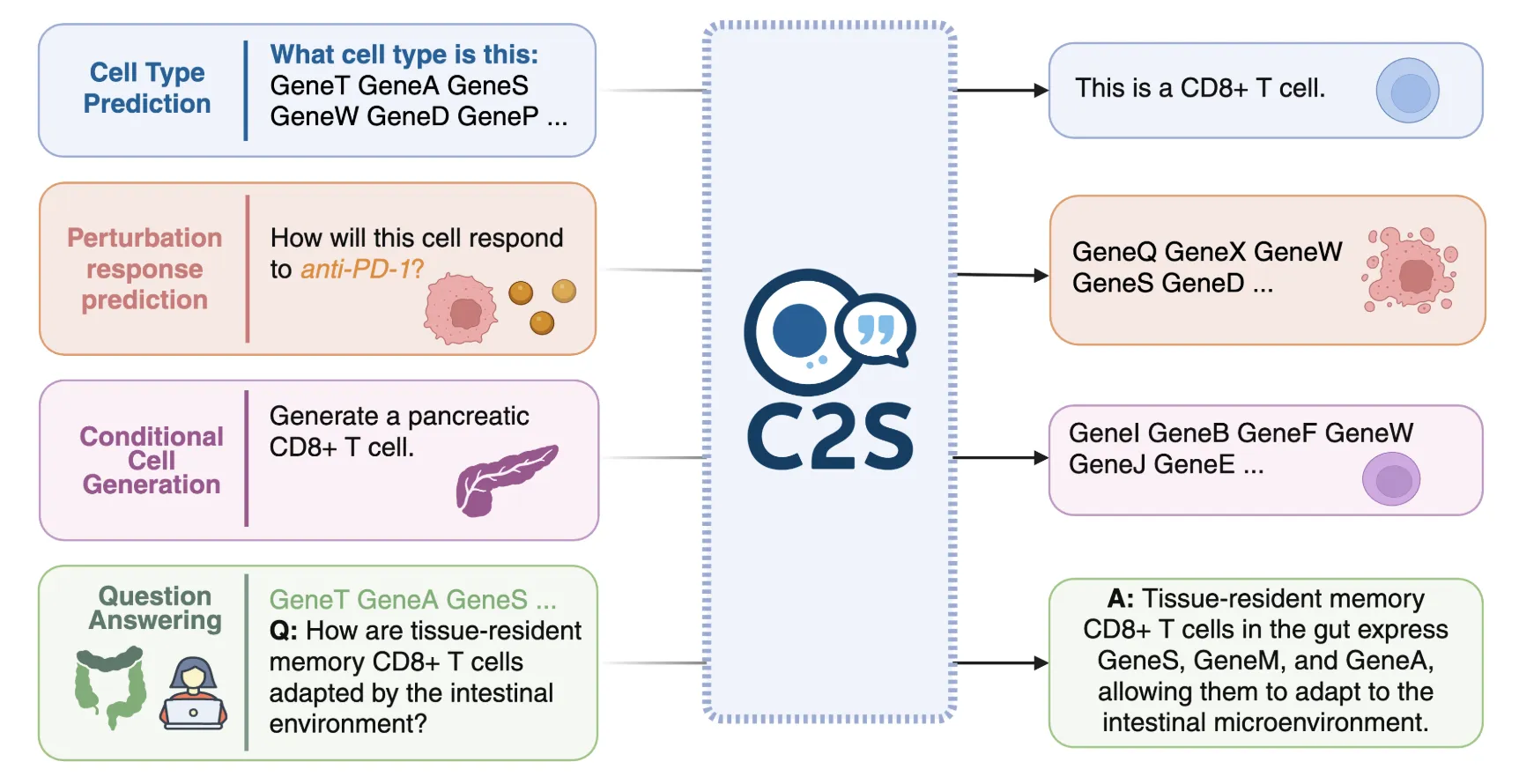A team of researchers from Google Research, Google DeepMind, and Yale released C2S-Scale 27B, a 27-billion-parameter foundation model for single-cell analysis built on Gemma-2. The model formalizes single-cell RNA-seq (scRNA-seq) profiles as “cell sentences”—ordered lists of gene symbols—so that a language model can natively parse and reason over cellular states. Beyond benchmarking gains, the research team reports an experimentally validated, context-dependent pathway: CK2 inhibition (silmitasertib/CX-4945) combined with low-dose interferon amplifies antigen presentation, a mechanism that could make “cold” tumors more responsive to immunotherapy. The result is ~50% increase in antigen presentation in vitro under the combined condition.
Understanding the model:
C2S-Scale converts a high-dimensional expression vector into text by rank-ordering genes and emitting the top-K symbols as a gene-name sequence. This representation aligns single-cell data with standard LLM toolchains and allows tasks such as cell-type prediction, tissue classification, cluster captioning, perturbation prediction, and biological QA to be phrased as text prompts and completions.

Training data, stack, and release
C2S-Scale-Gemma-2-27B is built on Gemma-2 27B (decoder-only Transformer), trained on Google TPU v5, and released under CC-BY-4.0. The training corpus aggregates >800 public scRNA-seq datasets spanning >57M cells (human and mouse) with associated metadata and textual context; pretraining unifies transcriptomic tokens and biological text into a single multimodal corpus.
The key result: an interferon-conditional amplifier
The research team constructed a dual-context virtual screen over >4,000 drugs to find compounds that boost antigen presentation (MHC-I program) only in immune-context-positive settings—i.e., primary patient samples with low interferon tone—while having negligible effect in immune-context-neutral cell-line data. The model predicted a striking context split for silmitasertib (CK2 inhibitor): strong MHC-I upregulation with low-dose interferon, little to none without interferon. The research team reports in-lab validation in human neuroendocrine models unseen in training, with the combination (silmitasertib + low-dose interferon) producing a marked, synergistic increase in antigen presentation (≈50% in their assays).
The amplifier lowers the response threshold to interferon rather than initiating antigen presentation de novo; flow-cytometry readouts show HLA-A,B,C upregulation only under combined treatment (including IFN-β and IFN-γ), across two neuroendocrine models, with representative MFI gains (e.g., 13.6% @10 nM and 34.9% @1000 nM silmitasertib in one model).
